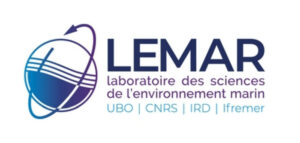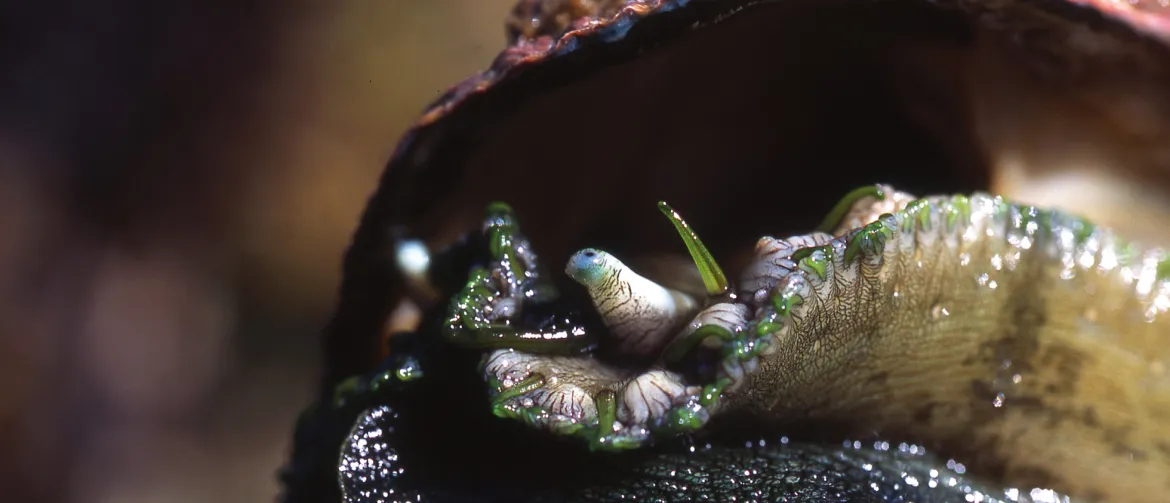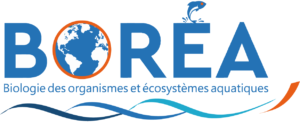

Genormalg
On the trail of the European abalone
Why Genormalg ?
The abalone, a flat sea snail once known as “the poor man’s dish,” was not highly prized on the French coast. However, this did not last long. Both for its brightly colored shell and its delicate flesh, it became highly sought after, to the point that it is now in decline. To protect it and prevent further depletion of already endangered stocks, quotas and fishing regulations have been put in place.
In addition to overfishing, changes in sea use, pollution, invasive species, and climate change pose an additional threat to abalone populations. As a calcifying and ectothermic species (no thermal regulation), abalone are relatively sensitive to changes in their environment, particularly temperature and pH.
For more than twenty years, to meet growing demand, aquaculturists have been selling farmed abalone specifically selected for their growth capacity and resistance.
In this context of declining abalone populations in a changing environment, the Génormalg project proposes to study the feasibility of (1) mitigation and (2) adaptation measures:
- Mitigation of the effects of acidification through algae co-culture.
- Adaptation to the decline in abalone populations by supporting wild populations with farmed abalone.
As you will understand, Genormalg actually combines two projects in one: one focused on mitigating the effects of climate change using algae (-ORMALG) and a second on the ability of farmed abalones to survive in a warmer and more acidic environment (GENORM-).
European abalone ID
Name & family
European abalone (Haliotis tuberculata) – Mollusk
Habitat
Intertidal area, a coastal area subject to significant variations in temperature and pH conditions
Feeding
It feeds on macroalgae, which it grazes on using its radula (a long tongue covered with teeth characteristic of this species)
Behavior
The European abalone spends most of its days hidden under rocks but is very active at night.
Génormalg scientific methodology
Abalone populations on the Atlantic coast are in sharp decline. This is due to overfishing and rapid changes in temperature and pH levels within abalone habitats. On land, hatcheries and aquaculture farms have been selecting individuals for abalone farming for over twenty years. These farms have also specialized in the production of macroalgae to feed abalone, but also for human consumption.
Could aquaculture activities be a way to help protect wild populations? This raises two questions:
(1) How will European abalone (wild and farmed) be affected by temperature and pH conditions in 2100?
(2) Are algae a means of mitigating the effect of ocean acidification on abalone?
The GÉNORMALG experiment was designed to address the two issues above.
For the hypothesis related to the adaptation of farmed and wild abalones to future conditions, scientists reproduced three temperature and pH conditions in aquariums:
(1) Current conditions: temperature and pH follow seasonal norms
(2) Farming conditions: temperature rises higher in summer and falls lower in winter, pH remains the same as current
(3) Conditions in 2100: temperature and pH follow the worst IPCC projections with an increase of 3°C and a decrease of 0.3 pH units.
To address the issue of algae, scientists duplicated conditions (1) and (3), adding algae in some cases and not in others.
This resulted in the following conditions:
(1A) Current conditions + macroalgae
(1S) Current conditions without constant presence of macroalgae
(3A) Conditions in 2100 + macroalgae
(3S) Conditions in 2100 without the constant presence of macroalgae
In each of the aquariums, scientists placed 60 wild abalones and 60 farmed abalones, which will be monitored throughout the year.
Finally, to test the effect of extreme phenomena that will become increasingly frequent over time, a summer heat wave was also reproduced.
During this year of monitoring, the abalones underwent various analyses.
Routine measurements, mortality monitoring, growth assessment, and feeding behavior were carried out.
On a more ad hoc basis, scientists conducted studies of movement and escape behavior and analyses of cellular energy reserves. At the end of the experiment, the remaining abalones were sacrificed, their organs removed for genetic marker analysis, and their shells studied to investigate the effect of pH declines.
Finally, to ensure that breeding conditions were maintained, temperature, pH, and oxygen levels were checked twice a day.
As the analyses are still ongoing, not all of the results are known yet. Therefore, no interpretation can be made.
To be continued…
Genormalg research leaders

Sabine Roussel

Grégory Charrier

Justine Fouassier








